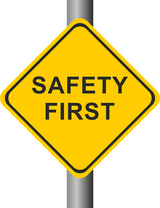Cordless Power Tools: Understanding Battery Voltages
Cordless power tools offer a superior level of convenience when compared to their corded counterparts. You can use them without being confined to a nearby wall outlet. Whether you're cutting, drilling or sanding, a cordless power tool will give you unlimited freedom. If you're planning to use an electric cordless power tool, though, you should familiarize yourself with battery voltages.
What Is Battery Voltage?
Battery voltage is essentially the charge difference between the negative and positive terminals of a battery. All batteries, including those used in electric power tools, have a negative terminal and a positive terminal. The difference between these terminals is measured in voltage. A higher voltage indicates a stronger and more powerful battery.
Common Battery Voltages for Cordless Power Tools
Cordless power tools are available in different voltages, some of the most common of which include 12V, 18V, 20V, 24V, 36V, 40V and 60V.
Low-voltage batteries are typically the cheapest. They cost significantly less than high-voltage batteries, making them a popular choice for budget-conscious consumers. Business owners and professionals, though, are often willing to spend the extra money on high-voltage batteries. High-voltage batteries offer more power, and they typically last longer than low-voltage batteries.
Don't Use a Battery With the Wrong Voltage Rating
Always check to ensure that you are using a battery with the right voltage rating for your cordless power tool. Some cordless powers have interchangeable batteries. Just because a battery with a different voltage rating will fit your cordless power tool, though, that doesn't mean it's safe to use it.
Cordless power tools are designed to operate at a specific voltage. Switching out the existing battery for a different battery with a higher or lower voltage may result in damage.
Battery Types: What You Should Know
In addition to the voltage, something else to consider when choosing a battery for a cordless power tool is the battery type. There are different types of rechargeable batteries, each of which uses a different technology.
In the past, nickel-cadmium (NiCd) and nickel-metal hydride (NiMH) batteries. You can still find cordless power tools that use these batteries, but most manufacturers have since switched to lithium-ion (Li-ion) batteries. Li-ion batteries are reliable, long-lasting, and they are better protected against self-discharge.
In Conclusion
Cordless power tools are often powered by a rechargeable battery. Voltage represents the difference between the battery's positive and negative terrminals. Jargon aside, it represents the strength of the battery.
Recent Posts
-
Fire Safety in the Workplace: What You Need to Know
What steps are you taking to prevent fires in your workplace? According to the U.S. Occupational Saf …Aug 23rd 2023 -
Is It Safe to Go Jogging With a Cold Infection?
If you're suffering from a cold infection, you might be wondering whether it's safe to go jogging. T …Aug 22nd 2023 -
5 Safety Tips to Follow When Using a Powder-Actuated Tool
Powder-actuated tools are commonly used to join materials to steel and concrete. Also known as Hilti …Aug 20th 2023




